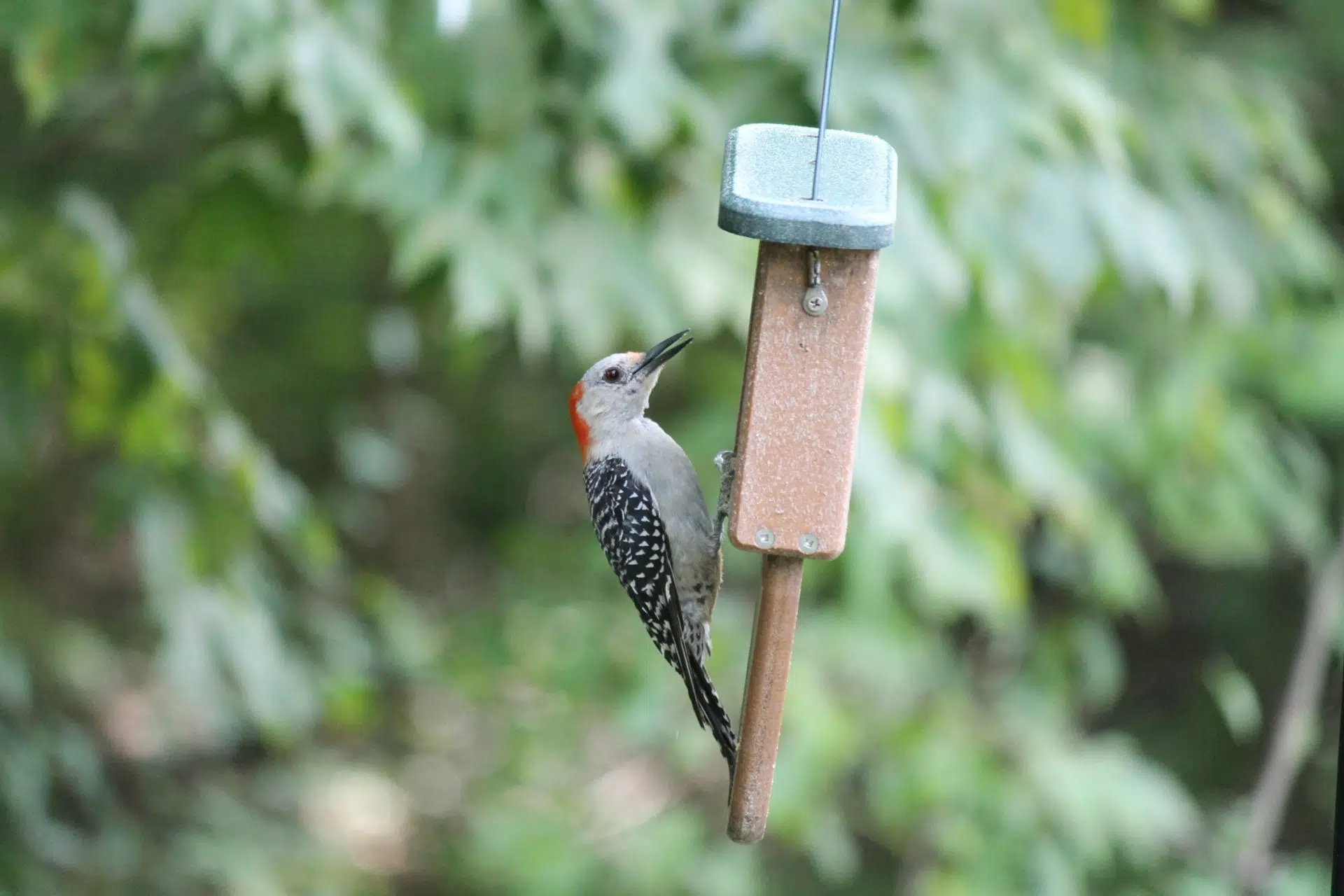Birds
Northern Flicker
Colaptes auratus

Voice: Song: a piercing, descending klee-yer or keeew is given year-round. Drum: a long, simple roll of 25 beats over a second, often interspersed with long wick wick wick series.
Northern flickers can be found throughout most wooded regions of North America including forest edges, and open fields with scattered trees, as well as in city parks and suburbs. They are one of the few North American woodpeckers that readily migrate. Small flocks of migrants and sometimes large flocks gather from late September through October and late March and April.
Even though northern flickers are quite capable of climbing trees and hammering on wood like other woodpeckers, they prefer to find their food on the ground. More often than not, they can be seen hammering in the soil for ants and larvae. It is speculated that they probably eat more ants than any other North American bird. Besides ants, northern flickers also feed on beetles, termites, caterpillars and other insects. Their tongues can reach out two inches beyond the end of their bill to capture prey. In the winter northern flickers eat fruits and seeds including poison ivy, dogwood, sumac, wild cherry, bayberries, hackberries, wild grape and sunflower seeds.
Breeding begins in late spring. Both the male and female flickers excavate cavities, usually in a dead or diseased tree. Unlike many woodpeckers, flickers often reuse cavities that they or another species excavated the previous year. They prefer a 3-inch diameter entrance hole usually 8 – 25 feet from the ground; with a cavity 7 – 16 inches deep. The cavity is bare except for a bed of wood chips for the eggs and chicks to rest on. These excavations take 15 – 28 days to complete.
Both parents incubate 5 – 8 white eggs for 11- 16 days. They have one set of eggs per year and feed their young by regurgitation. Young leave nest in 25 – 28 days after hatching. Young are fed by parents after leaving the nest until they are fully capable of foraging on their own.
Best Location to View: Wade Oval, Corning Lake
Color: Brown overall, patterned with black spots, bars, crescents; white rump. Yellow under wings and tail. Black bib; gray crown. Males: black mustache and red nape crescent.
Range: Wide range from Alaska to Nicaragua, migrates south during the winter.
Size: 11-13"
Wingspan: 16-20"




